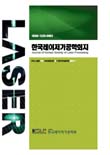피코초 레이저 및 CDE를 이용한 TSV가공기술
TSV Formation using Pico-second Laser and CDE
- 한국레이저가공학회
- 한국레이저가공학회지
- 한국레이저가공학회지 제14권 제4호
-
2011.1214 - 20 (7 pages)
- 252

The advantage of using lasers for through silicon via (TSV) drilling is that they allow higher flexibility during manufacturing because vacuums, lithography, and masks are not required; furthermore, the lasers can be applied to metal and dielectric layers other than silicon. However, conventional nanosecond lasers have disadvantages including that they can cause heat affection around the target area. In contrast, the use of a picosecond laser enables the precise generation of TSVs with a smaller heat affected zone. In this study, a comparison of the thermal and crystallographic defect around laser-drilled holes when using a picosecond laser beam with varing a fluence and repetition rate was conducted. Notably, the higher fluence and repetition rate picosecond laser process increased the experimentally recast layer, surface debris, and dislocation around the hole better than the high fluence and repetition rate. These findings suggest that even the picosecond laser has a heat accumulation effect under high fluence and short pulse interval conditions. To eliminate these defects under the high speed process, the CDE (chemical downstream etching) process was employed and it can prove the possibility to applicate to the TSV industry.
Abstract
1. 서 론
2. 실험결과 고찰
3. 결 론
후 기
참고문헌
(0)
(0)